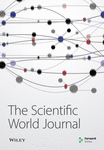Plasmablastic Lymphoma: A Systematic Review
Abstract
Plasmablastic lymphoma (PBL) is a very aggressive variant of diffuse large B-cell lymphoma initially described in the oral cavity of HIV-infected individuals. PBL represents a diagnostic challenge given its characteristic morphology and lack of CD20 expression, and also a therapeutic challenge, with early responses to therapy, but with high relapse rates and poor prognosis. In recent years, our understanding and clinical experience with PBL has increased in both HIV-positive and -negative settings. However, given its rarity, most of the data available rely on case reports and case series. The main goal of this article is to systematically review the most recent advances in epidemiology; pathophysiology; clinical, pathologic, and molecular characteristics; therapy; and prognosis in patients with PBL. Specific covered topics include new pathological markers for diagnosis, its association with Epstein-Barr virus, and the need of more intensive therapies.




